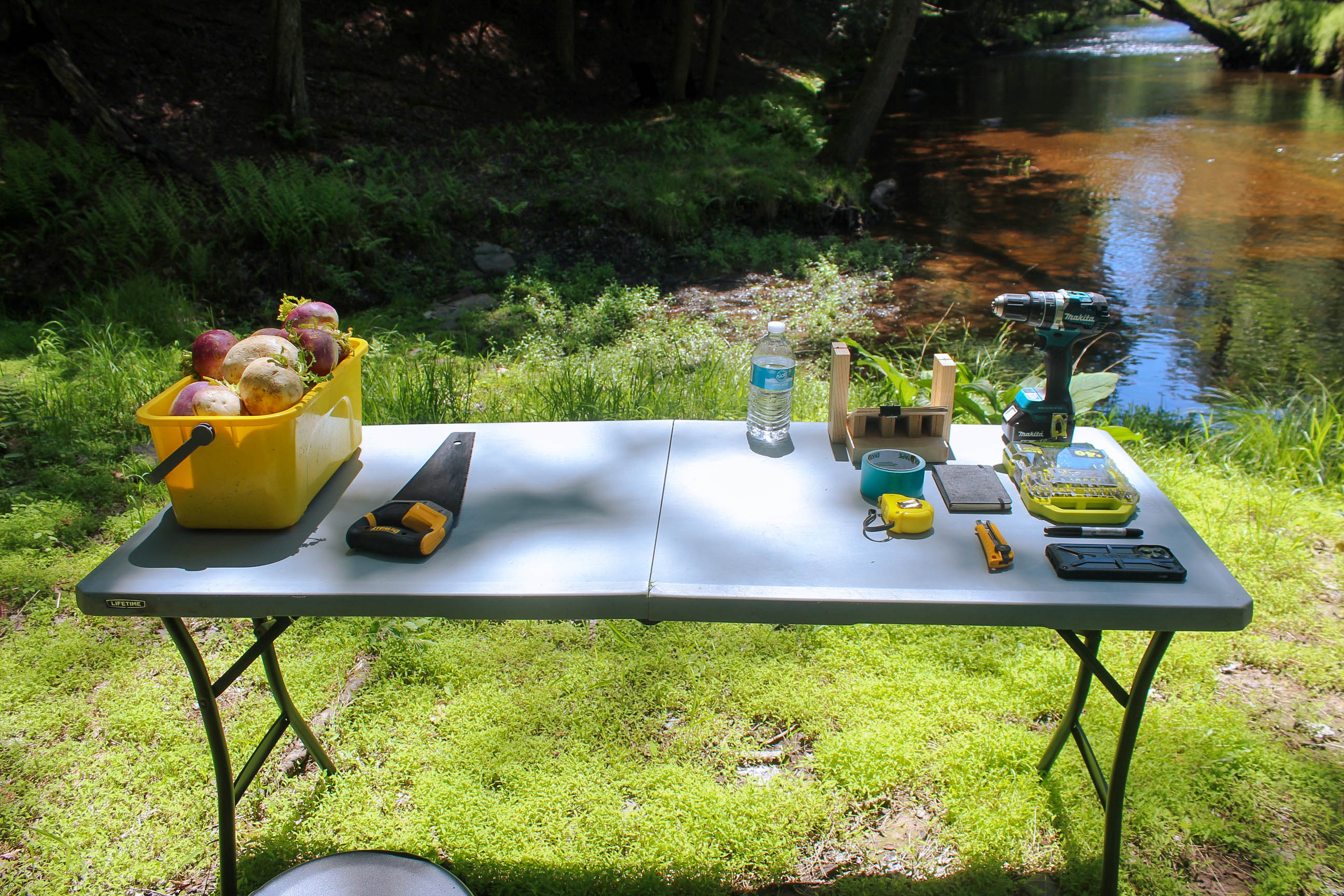![]()
2022 - On Going
Turnip Architecture
For Wild Deer
Role:
Designer, Maker,
Researcher, Futurist
Wild deer love turnips. For centuries, humans have used turnip plants as bait to hunt deer. However, this project focuses on designing for the deer themselves. How can we create play structures for them using the very turnips they love so much?
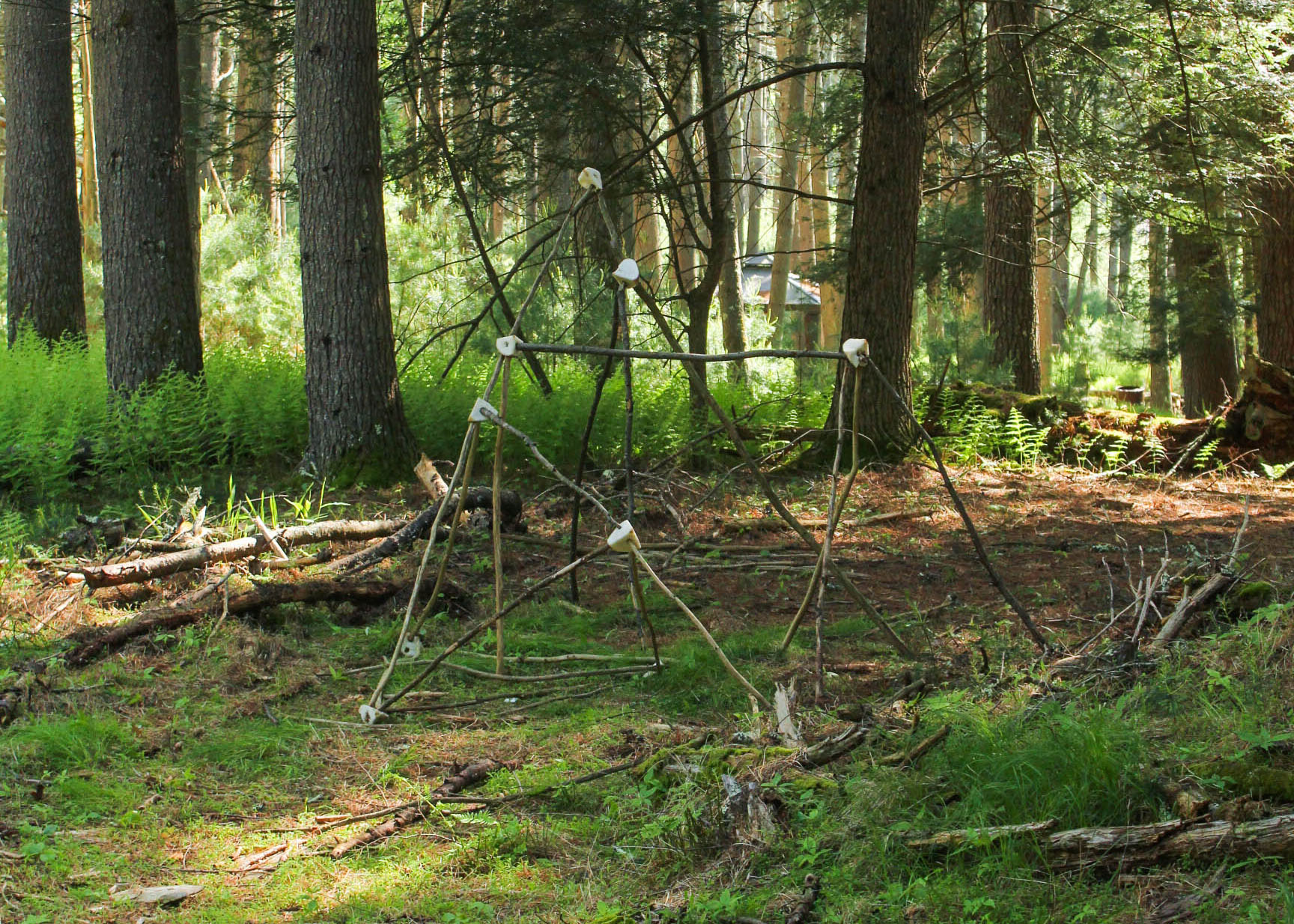
FIG. 01: Prototype of Deer Playstruture
GOAL
Create architecture using turnips and twigs, then leave it in the wild for the deer to use and modify.
Create architecture using turnips and twigs, then leave it in the wild for the deer to use and modify.

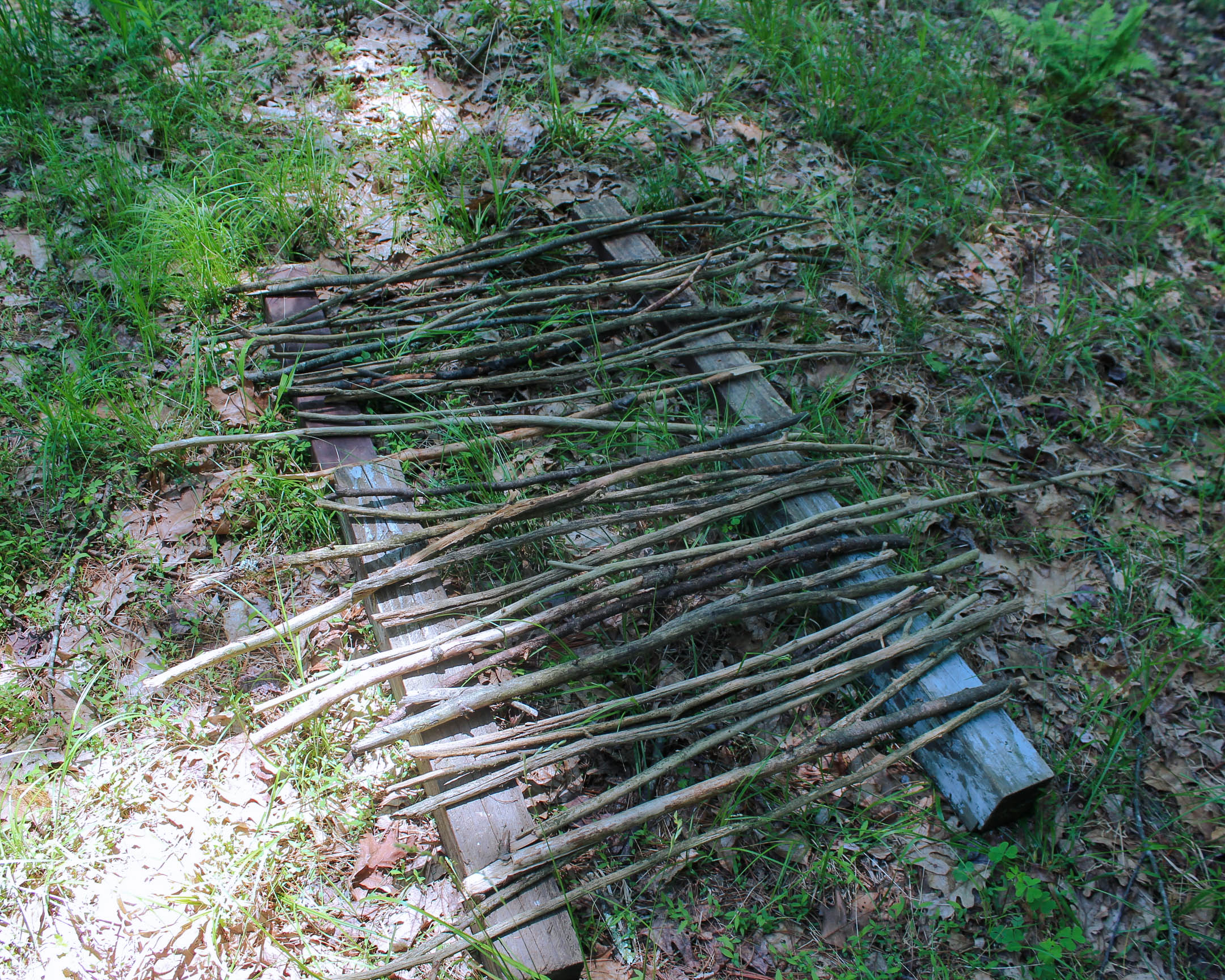
![]()
![]()
![]()
METHOD
The bulbous turnip is machined into a tetrahedron shape with six connector points. Wooded twigs of standardized lengths will be attached to these turnip connectors, to build up a geometric structure.
A jig is designed to produce uniformly-shaped turnip tetrahedrons. The same jig can also be used to create precisely angled, symmetrical holes to attach twigs.
5’7” x 5’ x 4.9’

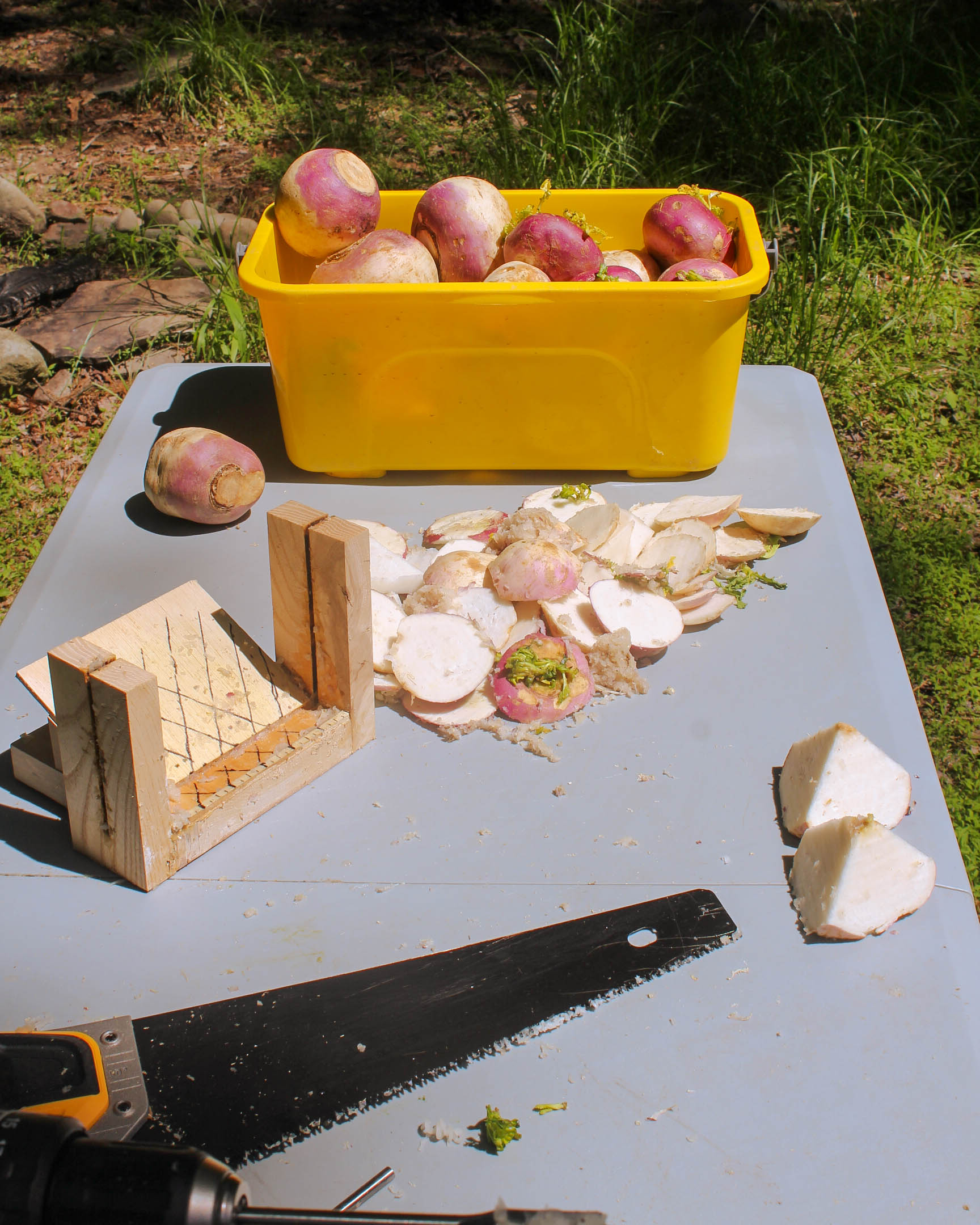

METHOD
The bulbous turnip is machined into a tetrahedron shape with six connector points. Wooded twigs of standardized lengths will be attached to these turnip connectors, to build up a geometric structure.
A jig is designed to produce uniformly-shaped turnip tetrahedrons. The same jig can also be used to create precisely angled, symmetrical holes to attach twigs.
5’7” x 5’ x 4.9’
A jig is designed to produce uniformly-shaped turnip tetrahedrons. The same jig can also be used to create precisely angled, symmetrical holes to attach twigs.
5’7” x 5’ x 4.9’
![]()
![]()
![]()
![]()
INTENTION
To use the methods of the design process, such as prototyping and user testing, and apply them to non-human subjects. In this case, the end user is wild deer, so the affordances are to be adjusted accordingly.



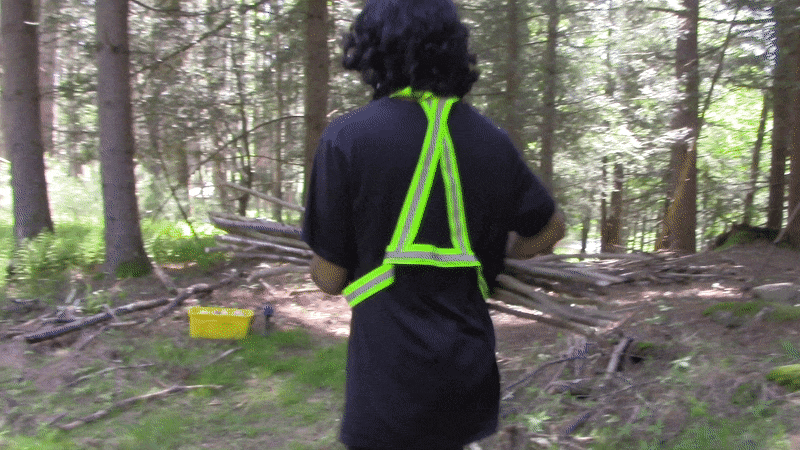
INTENTION
To use the methods of the design process, such as prototyping and user testing, and apply them to non-human subjects. In this case, the end user is wild deer, so the affordances are to be adjusted accordingly.
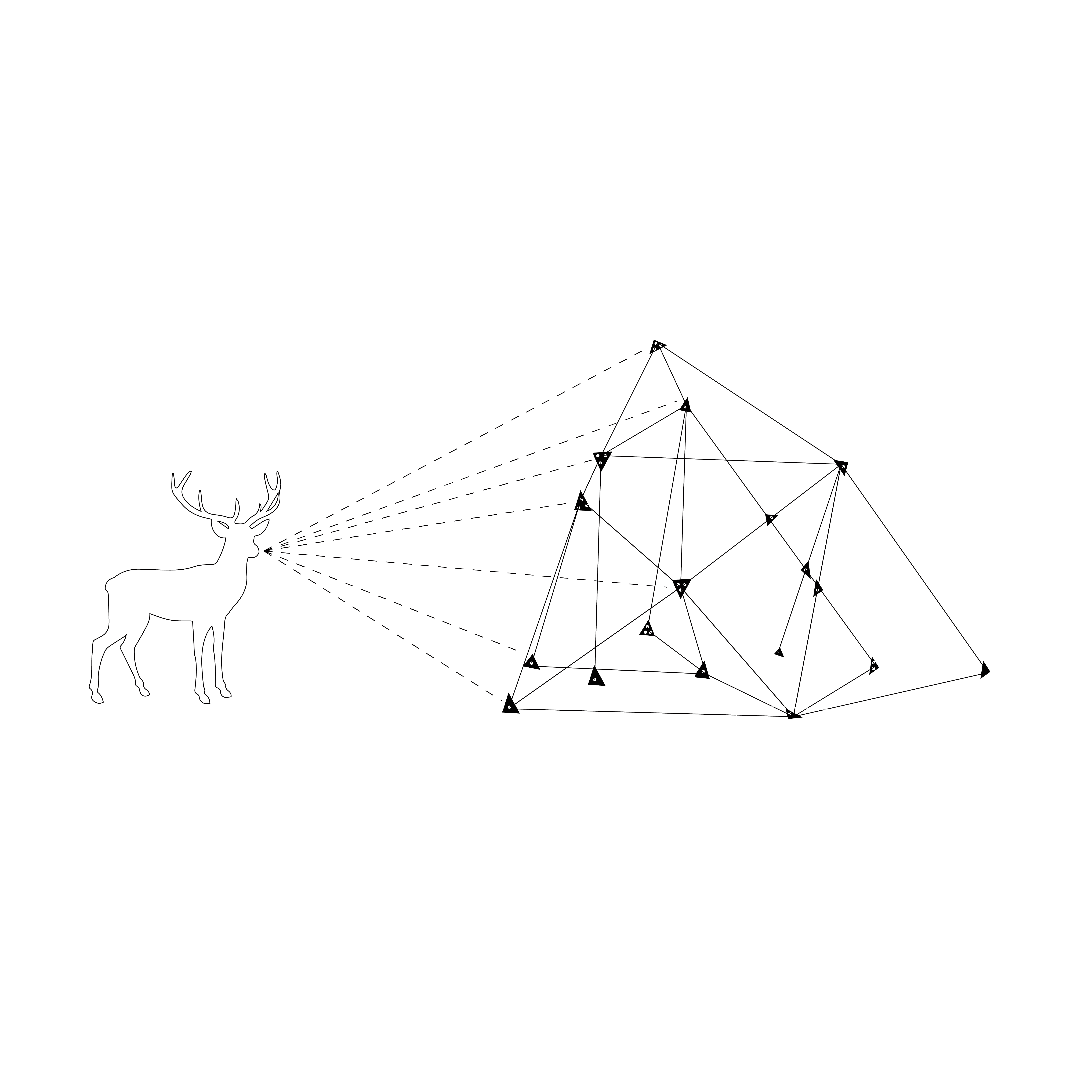


ANTICIPATED USER BEHAVIOR
The wild deer approaches the structure with sheer joy and an inventive sense of play, bewilderment, and productivity.
ANTICIPATED USER BEHAVIOR
The wild deer approaches the structure with sheer joy and an inventive sense of play, bewilderment, and productivity.



ACTUAL USER BEHAVIOR
Wild deer shy away from any engagement after sensing danger from the human odor that was left on structures.
ACTUAL USER BEHAVIOR
Wild deer shy away from any engagement after sensing danger from the human odor that was left on structures.
NEXT STEPS
Try again.
Wild deer are known to be extremely cautious and will often flee at the slightest hint of danger. This natural instinct is a result of centuries of evolution in which deer have learned to avoid humans as much as possible in order to protect themselves from potential predators.
This behavior is not necessarily permanent. With a better understanding of deer behavior, it is possible to approach them in a non-threatening manner and establish a sense of trust. This can be achieved through various means, such as leaving food in a designated area and slowly moving closer over time. How could design be used to develope these?
NEXT STEPS
Try again.
Wild deer are known to be extremely cautious and will often flee at the slightest hint of danger. This natural instinct is a result of centuries of evolution in which deer have learned to avoid humans as much as possible in order to protect themselves from potential predators.
This behavior is not necessarily permanent. With a better understanding of deer behavior, it is possible to approach them in a non-threatening manner and establish a sense of trust. This can be achieved through various means, such as leaving food in a designated area and slowly moving closer over time. How could design be used to develope these?
Wild deer are known to be extremely cautious and will often flee at the slightest hint of danger. This natural instinct is a result of centuries of evolution in which deer have learned to avoid humans as much as possible in order to protect themselves from potential predators.
This behavior is not necessarily permanent. With a better understanding of deer behavior, it is possible to approach them in a non-threatening manner and establish a sense of trust. This can be achieved through various means, such as leaving food in a designated area and slowly moving closer over time. How could design be used to develope these?
PROCESS
Efficient Joinery Design,
Jig Design, Planning
![]()
![]()
![]()
![]()
![]()
![]()
![]()
![]()
![]()
![]()
PROCESS
Efficient Joinery Design,
Jig Design, Planning
Jig Design, Planning









Part of research conducted at:
The Designed Realities Lab, The New School, NY.
Through practice-led research and project-based teaching, it aims to integrate theory and practice into concrete responses to the complex fusion of politics and technology shaping today’s social realities.
The Designed Realities Lab, The New School, NY.
Through practice-led research and project-based teaching, it aims to integrate theory and practice into concrete responses to the complex fusion of politics and technology shaping today’s social realities.
Researched under the guidance of:
Fiona Raby,
Award Winning Designer,
Part of duo Dunne & Raby.
With special thanks to:
Documentation Photographer:
Krithi Nalla
Fiona Raby,
Award Winning Designer,
Part of duo Dunne & Raby.
With special thanks to:
Documentation Photographer:
Krithi Nalla

